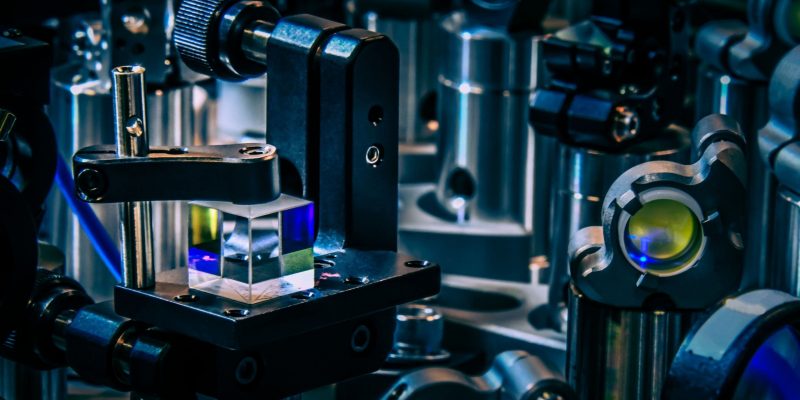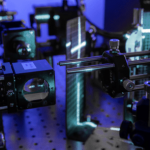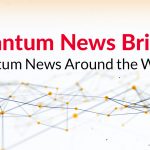Quantinuum Releases New H2 Quantum Computing System with 32 Qubits

In a recent announcement, Quantinuum released its next-generation quantum computer, the H2 system. “This is a breakaway moment for the company,” explained Quantinuum’s CEO Dr. Rajeeb Hazra, in a press tour of the new system. Using Quantinuum’s state-of-the-art trapped ion qubits, several of the company’s teams were able to test the H2’s computing power, creating a new state of matter in the process, as well as revealing its powerful optimization technology. This is a huge moment for Quantinuum, as releasing a new version of a quantum computer is critical to improving performance, staying ahead of the competition, expanding the market, and demonstrating progress in advancing technology.
Entangling Entanglement on the H2 System
While Quantinuum’s H1 system had a linear assembly for its ytterbium ion qubits, H2 is instead laid out like a race track, with two curved ends. This allows the qubits to interact with each other in a more efficient manner. The H2 system can also be overlaid on top of the H1 system, boosting the computing power even further. “Our ion trap is only the size of a thumbnail,” Quantinuum President and COO Tony Uttley stated, “But it is powerful!”
Using the new H2 setup, Quantinuum’s Managing Director and Scientific Lead of the Munich branch, Dr. Henrik Dreyer, and his team were able to create what he called a “new state of matter,” known as non-Abelian anyons, which are particles that move through space and drag a type of “string” behind them. This string, though ephemeral, could be used to encode information, as Dreyer and his team found. For the first time, the researchers created and controlled these anyons in the ion trap, entangling their strings. From their work, they found a 98.4% fidelity of their system, showing that their method of entanglement could possibly be used to help develop a more fault-tolerant system in the future. “We entangled entanglement,” Uttley added. “It’s amazing, but it’s not done yet. We still have work to do.”
Testing H2 Optimization Performance
Each new version of a quantum computer typically offers better performance in terms of speed, accuracy, and the ability to solve more complex problems. This improved performance is critical in demonstrating the value of the company’s technology to potential customers and investors. To determine H2’s performance, Dr. David Amaro, the Senior Research Scientist from Quantinuum’s London office, and his team tested several types of optimization problems on the H2 system. Specifically, the researchers tested combinatorial optimization, which looks for the best choice out of a set of selections. They ran their tests against other, more standardized optimization algorithms and found a more streamlined performance.
Looking at H2 Benchmarks
Other ways to test a new quantum computing system include looking at benchmarks. Dr. David Hayes, the Senior Manager for Architecture and Theory at Quantinuum, and his team ran the H2 system through several different types of benchmark tests, from Hamiltonian simulation and quantum dynamics (which included both quantum simulations and algorithms) to error corrections. As Hayes proudly explained, his team found the H2 system had the “lowest error rates in history,” making the H2 system seem even more advanced for the quantum computing industry. As papers about benchmarking and anyons testing will be submitted to several journals, Quantinuum also plans to make its data fully available online. “We hope this represents a new standard in transparency,” Hayes added, explaining that Quantinuum’s release of its data could set a new precedent for quantum computing companies everywhere.
Quantum computing is still a relatively new technology, and there is much work to be done to optimize the technology and its applications. Releasing a new version of a quantum computer demonstrates progress and a commitment to advancing the technology, which can help to attract further investment and collaboration opportunities. The Quantinuum team certainly thought so when they announced their new H2 system. As Uttley added: “We have broken away. We can show with our customers and partners what we can do with quantum computing, to the world.”
Kenna Hughes-Castleberry is a staff writer at Inside Quantum Technology and the Science Communicator at JILA (a partnership between the University of Colorado Boulder and NIST). Her writing beats include deep tech, quantum computing, and AI. Her work has been featured in Scientific American, Discover Magazine, Ars Technica, and more.



















